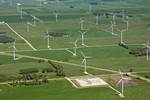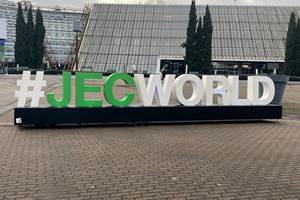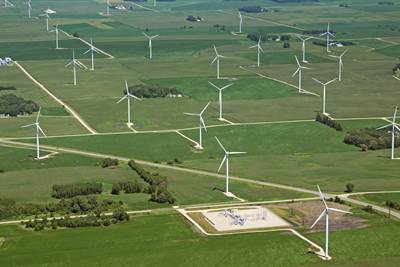Continuum targets facility capacity, transforms composite materials to advance wind blade recycling
The Denmark company details a CO2-neutral transformation technology to make 100% recyclable wind blades, plans to build six recycling facilities.
Photo Credit: Getty Images
Denmark-based was founded to target the wind blade recycling initiative taking place across the globe. In order to abandon landfilling and to significantly reduce the CO2 emitted during current “recycling” processes like incineration and co-processing in cement facilities, Continuum is targeting composite material transformation to achieve more eco-friendly, fully recyclable wind turbine blades. The company is also anticipating the need for increased recycling capacity, expecting to develop several industrial-scale factories. Combined, Continuum believes it can reduce wind blade disposal by 100 million tonnes by 2050.
“As a society we are rightly focused on renewable energy production, however the subject of what to do with wind turbine blades in the aftermath of that production has not been effectively addressed,” Nicolas Derrien, CEO of Continuum Holdings ApS, says per the offshoreWIND.biz announcement. “We’re changing that, offering a recycling solution for the blades and a construction product that will outperform most other existing construction materials and be infinitely recyclable, and with the lowest carbon footprint in its class.”
To achieve its goals, Continuum is reusing composites via a CO2-neutral transformation technology — final material is said to be made up of 92% recycled material. This material is used to created composite panels for the construction industry and the manufacture of day-to-day products such as facades, industrial doors and kitchen countertops. Per a technical overview on the company’s website, Continuum describes its :
- Continuum organizes the transport and logistics of feedstocks from wind blades, automotive, marine and manufacturing waste — primarily glass fiber/polyurethane (GRP/PUR) — to its facility according to client needs.
- During material reclamation and reprocessing, the company mechanically transforms and separates feedstock materials back into their raw, basic constituents through a variety of process such as cutting, milling, breaking, screening, gravity-separating, sorting, sifting, cleaning and storing. The system is said to optically sort out formerly embedded carbon fiber; all ferrous and non-ferrous metals and pollutants are separated and sent off for further recycling.
- Fibers (glass, carbon fiber, etc.) are cut to <20 millimeters.
- PUR and fillers are ground to <1.5 millimeters.
- Binders (epoxies and resins) are also ground to <2 millimeters.
- After these processes, Continuum creates new compound blends “based on the classified, reclaimed materials together with virgin resin(s) and/or other formaldehyde-free additives.” Additional material/blends can be developed, depending on application needs.
- High-performance, high-density (single or multi-layered) panels are development. Mats comprising the blended composite materials are formed, pre-compressed and then placed under high heat and pressure in a continuous press to form the final product.
According to offshoreWIND.biz, Continuum, which is already present in Denmark and the U.K., plans to build six factories, the first of which will be in Esbjerg, Denmark, and is expected to be operational by the end of 2024, followed by a second factory in the U.K. After the first two facilities, the company plans to build four more by 2030 in France, Germany, Spain and Turkey. Continuum estimates that each facility will have the capacity to “recycle a minimum of 36,000 tonnes of EOL turbine blades per year and will be designed to be powered only by 100% green energy, with zero carbon emitting environments.”
The company says it will be able to begin taking end-of-life (EOL) wind blades by the end of 2023.
Related Content
JEC World 2024 highlights: Glass fiber recycling, biocomposites and more
CW technical editor Hannah Mason discusses trends seen at this year’s JEC World trade show, including sustainability-focused technologies and commitments, the Paris Olympics amongst other topics.
Read MoreComposites end markets: Sports and recreation (2025)
The use of composite materials in high-performance sporting goods continues to grow, with new advancements including thermoplastic and sustainability-focused materials and automated processes.
Read MorePlant tour: Hexagon Purus, Kassel, Germany
Fully automated, Industry 4.0 line for hydrogen pressure vessels advances efficiency and versatility in small footprint for next-gen, sustainable composites production.
Read MoreWatch: A practical view of sustainability in composites product development
Markus Beer of Forward Engineering addresses definitions of sustainability, how to approach sustainability goals, the role of life cycle analysis (LCA) and social, environmental and governmental driving forces. Watch his “CW Tech Days: Sustainability” presentation.
Read MoreRead Next
Regen Fiber launches eco-friendly wind blade recycling process
Regen Fiber’s sustainable recycling process keeps wind blades out of landfills by converting them into raw materials for use in asphalt, composite products and more.
Read MoreScaling up, optimizing the flax fiber composite camper
Greenlander’s Sherpa RV cab, which is largely constructed from flax fiber/bio-epoxy sandwich panels, nears commercial production readiness and next-generation scale-up.
Read MoreUltrasonic welding for in-space manufacturing of CFRTP
Agile Ultrasonics and NASA trial robotic-compatible carbon fiber-reinforced thermoplastic ultrasonic welding technology for space structures.
Read More












